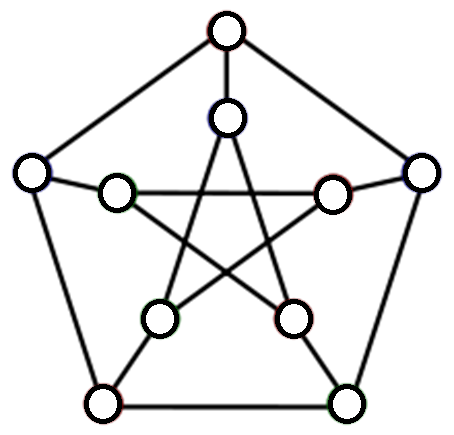Maximize
2 x1 + 4 x2 + 8 x3
subject to
0 x1 + 1 x2 + 2 x3 <= 4
0 x1 + 1 x2 - 3 x3 <= 12
1 x1 + 1 x2 + 1 x3 <= 10
x1, x2, x3 >= 0
At each iteration, show your work to:
- Solve ABT y = cB for y.
- Compute [cNT - yT AN] * xN to get coefficients of non-basic variables.
- Solve for entering column d in the current dictionary: d= AB-1 a where a is the entering column taken from the initial problem.
If you have a revised Simplex method question on the final exam, then I will include these instructions so you do not have to memorize the formulas.
Maximize 5 x1 + 4 x2 + 3 x3
subject to
2 x1 + 3 x2 + 1 x3 <= 5 4 x1 + 1 x2 + 2 x3 <= 11 3 x1 + 4 x2 + 2 x3 <= 8
x1, x2, x3 >= 0 .
(a) [5] Show how complementary slackness can be used to prove that (2.5, 0, 0) is not an optimal solution.
(b) [5] Show how complementary slackness can be used to prove that (2, 0, 1) is an optimal solution.

(a) [4] Analogous to what I did for the 120-cell, set up a linear programming problem for an upper bound for the maximum independent set order of a Petersen graph.
The variables you should use (in this order) are: R, P0, P1, P2, B0, B1, B2, B3. The equations should state that:
- The number of vertices is 10.
- The number of pentagons is the total number that the Petersen graph has. Hint: the graph is vertex-symmetric so each vertex is in the same number of pentagons.
- The number of reds matches up with the numbers you find in the pentagons.
- The number of reds matches up with the numbers you find as neighbours of the blue vertices.
(b) [4] Solve this using your program. What are the values for R, P0, P1, P2, B0, B1, B2, B3 at the optimal solution?
(c) [2] Show an independent set of the Petersen graph that realizes the values obtained for your optimal solution (or explain why no such independent set can exist).
Maximize 5 x1 -2 x 2
subject to
-x 1 + x2 <= 2.5
x 1 + x2 <= 5.5
x 1 - x2 <= 1.5
x 1, x2 >= 0
Solve this by the branch and bound algorithm. To make it easier for the TA to mark this question, please select the non-integer variable with smallest subscript at each step for the branching.
(a) [10] Draw a flowchart indicating the subproblems you had to solve to find the optimal solution. When you do not have to continue with a subproblem, explain why on the flowchart.
(b) [5] Hand in your program output for the subproblems you must solve to find the optimal solution.
(a) [10] At each step where you computed a cutting plane, explain what you did to get it.
(b) [5] Hand in the output for the problems you had to solve.
BIG HINT: If you get something like this with integer coefficients:
X2= 3.5 + 5 X4 - 1 X5 Then break it up like this: X2= 3 + 6 X4 + 0 X5 + 0.5 - 1 X4 - 1 X5 and not like this: X2= 3 + 5 X4 - 1 X5 + 0.5 - 0 X4 - 0 X5since the second approach won't get you anywhere.
- [2] The boundaries of the relaxed feasible region with the corners labelled with their x,y-coordinates.
- [2] The optimal solution to the relaxed problem.
- [2] The corners of the feasible region for the integral solutions labelled with their x,y-coordinates.
- [2] The extra integer constraints the separation algorithm considered.
- [2] The cutting planes the cutting plane algorithm added.